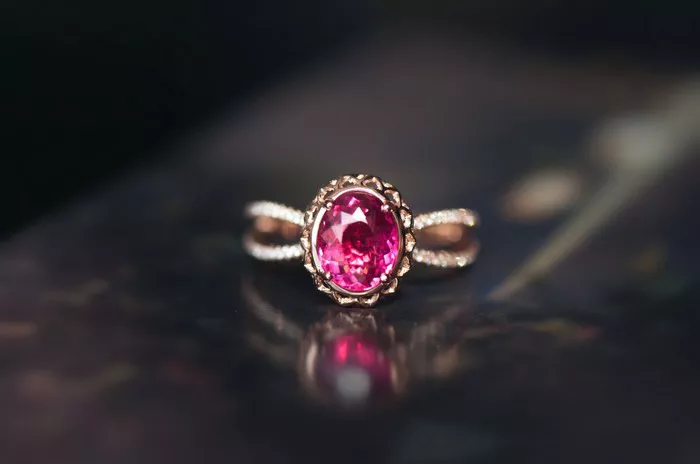Luminescence, a captivating phenomenon where a material emits light without heat, has long intrigued scientists and gem enthusiasts alike. Among the myriad gemstones that exhibit this enchanting property, pink tourmaline stands out for its mesmerizing glow under ultraviolet (UV) light. In this article, we delve into the fascinating world of tourmaline luminescence, exploring its scientific basis, the varieties that display this phenomenon, factors influencing luminescence, and how to distinguish genuine pink tourmaline from imitations.
Understanding UV Light
Ultraviolet light, commonly abbreviated as UV light, is electromagnetic radiation with wavelengths shorter than those of visible light but longer than X-rays. It is divided into three categories based on wavelength: UV-A, UV-B, and UV-C. UV-A and UV-B light are present in sunlight, while UV-C is mostly absorbed by the Earth’s atmosphere.
UV light is invisible to the human eye but can cause materials to fluoresce or emit visible light. This property is utilized in various applications, including forensics, mineralogy, and gemology, to reveal hidden characteristics of substances.
What is Luminescence?
Luminescence refers to the emission of light by a material without significant heat production. This phenomenon occurs when electrons within the crystal structure of a substance become excited by an external energy source, such as UV radiation, and transition to a higher energy state. As these excited electrons return to their original, lower energy state, they release energy in the form of light, creating the characteristic glow associated with luminescent materials.
How Does Tourmaline Luminescence Occur?
Tourmaline, a complex borosilicate mineral with a unique crystal structure, exhibits luminescence when exposed to UV light. When UV radiation interacts with tourmaline, it energizes electrons within the gemstone’s crystal lattice, causing them to move to higher energy levels. As these excited electrons return to their ground state, they emit energy in the form of visible light, resulting in the vibrant glow characteristic of luminescent tourmaline.
Types of Tourmaline That Glow Under UV Light
While not all varieties of tourmaline exhibit luminescence under UV light, several types are renowned for their captivating glow:
Rubellite: This pink to red variety of tourmaline glows intensely under UV light, often displaying vibrant red or pink hues.
Verdelite: The green variety of tourmaline may exhibit a bright green glow under UV illumination, adding to its captivating charm.
Indicolite: The blue variety of tourmaline can display a range of luminescent colors, from pale blue to deep indigo, under UV light.
Paraiba Tourmaline: This rare and highly prized variety often exhibits a stunning neon-blue glow under UV light, making it particularly sought after by collectors and connoisseurs.
Factors Influencing Luminescence
Several factors influence the intensity and color of tourmaline’s luminescence, including:
Presence of Specific Impurities: The presence of certain impurities within the crystal structure of tourmaline can influence its luminescent properties, resulting in variations in color and intensity under UV light.
Gemstone Quality and Cut: The quality and cut of the tourmaline gemstone can also impact its luminescence, with well-cut, high-quality stones typically exhibiting a more pronounced and vibrant glow under UV illumination.
UV Light Source and Wavelength: The type and wavelength of the UV light source used to illuminate the tourmaline can affect its luminescent characteristics, with some wavelengths producing more intense fluorescence than others.
Distinguishing Genuine Pink Tourmaline from Imitations
When identifying genuine pink tourmaline and distinguishing it from imitations or synthetic stones, the following characteristics can be helpful:
Color and Intensity: Genuine pink tourmaline typically exhibits a bright pink or red glow under UV light, whereas imitations may lack fluorescence or display a different color.
Transparency and Clarity: Authentic pink tourmaline often possesses a high degree of transparency and clarity, allowing for the unhindered passage of light and enhancing its luminescent properties.
Source and Certification: Purchasing pink tourmaline from reputable sources and ensuring proper certification can provide assurance of its authenticity and quality.
In conclusion, the luminescence exhibited by pink tourmaline under UV light is a captivating testament to the intricate interplay of light and matter. By understanding the science behind this phenomenon and considering the factors that influence it, enthusiasts and collectors can appreciate the beauty and uniqueness of luminescent tourmaline while making informed decisions when acquiring these exquisite gemstones.


